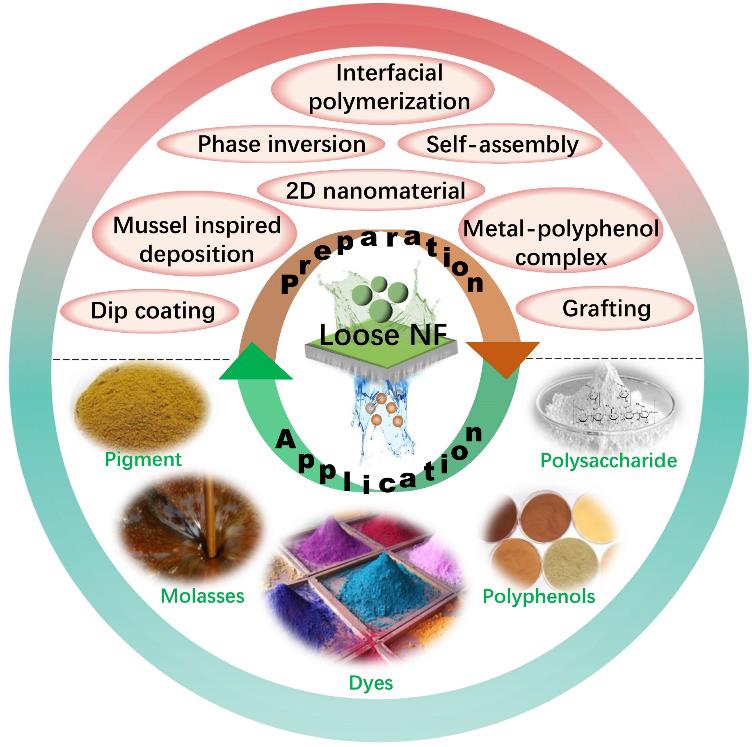Nanofiltration (NF) is a type of pressure-driven membrane process between ultrafiltration and reverse osmosis. It has been widely applied in various areas such as desalination, wastewater treatment, and liquid concentration.
Small pore size and strong electrostatic effect of NF membranes are responsible for the high rejection of the most organic solutes and salts. This not only results in high concentration polarization and serious membrane fouling, but also limits the application of NF membranes in resource recovery from wastewater and biomass due to the low selectivity for small solutes.
An emerging loose NF membrane has attracted increasing interests due to its higher selectivity and lower operating pressure, which exhibited distinct advantages in resource recovery.
Researchers from the Institute of Process Engineering (IPE) of the Chinese Academy of Sciences summarized the developments in the emerging field of loose nanofiltration (NF), and provided guidance to improve the fabrication of loose NF membranes and facilitate their applications in resource recovery.
The study was published in Chemical Engineering Journal on October 16 ( DOI: 10.1016/j.cej.2020.127376 ).
Loose NF membrane with a relatively larger pore size can properly satisfy these applications and recover different components because it not only retains large molecules but also possesses a reasonably high permeation of salts and small organic molecules.
Researchers provided an overview of the development of loose NF membranes, and emphasized NF membrane preparation strategies and applications in resource recovery.
Regarding the membrane preparation, phase inversion and interfacial polymerization are the two leading and scalable fabrication methods, and other methods including dip coating, mussel-inspired deposition, self-assembly, grafting polymerization, and nanomaterials assembly/growth are also widely studied at a laboratory scale.
As for the application of loose NF membrane, the fractionation of saccharides, polyphenols, and pigments for bioresource recovery as well as the separation of dyes and salts for "zero discharge" become research hotspots due to the increasing industrial demand. The researchers also discussed the challenges and prospects and proposed many specific promising directions.
"This review provides meaningful guidance for the future development of loose NF membranes, and the researchers will pay more attention to this emerging and promising area," said Prof. LUO Jianquan from IPE.

Schematic diagram of the loose NF membrane preparation strategies and the applications in resource recovery (Image by GUO Shiwei)
Media Contact:
LI Xiangyu
Public Information Officer
Institute of Process Engineering, Chinese Academy of Sciences, Beijing 100190, P. R. China.
E-mail: xiangyuli@ipe.ac.cn
Tel: 86-10-82544826